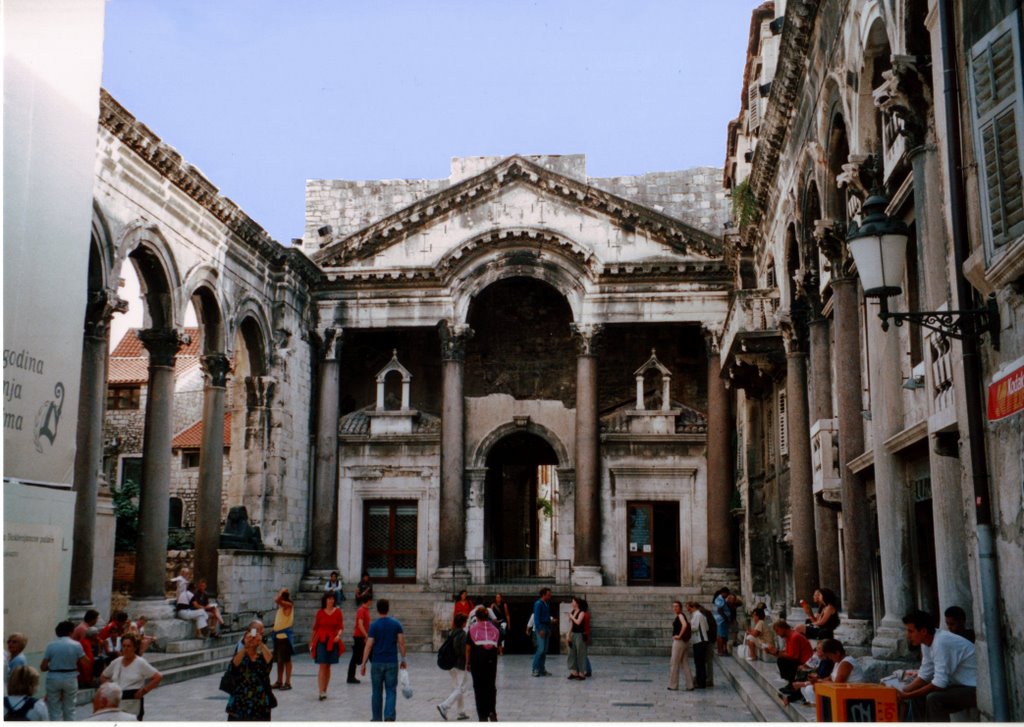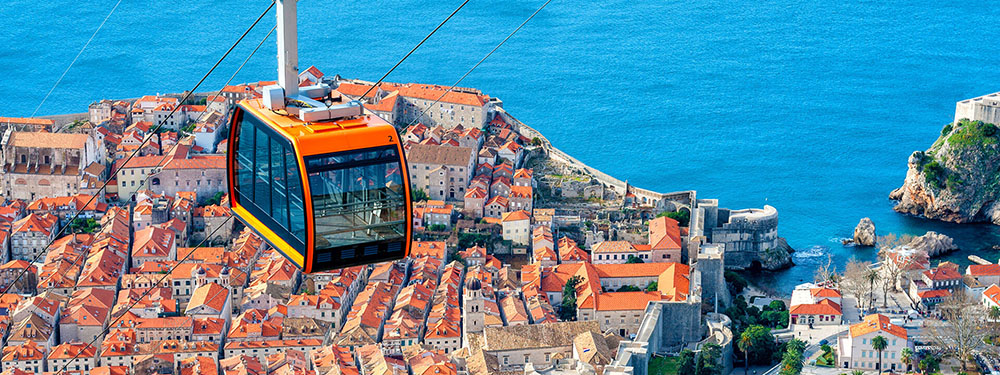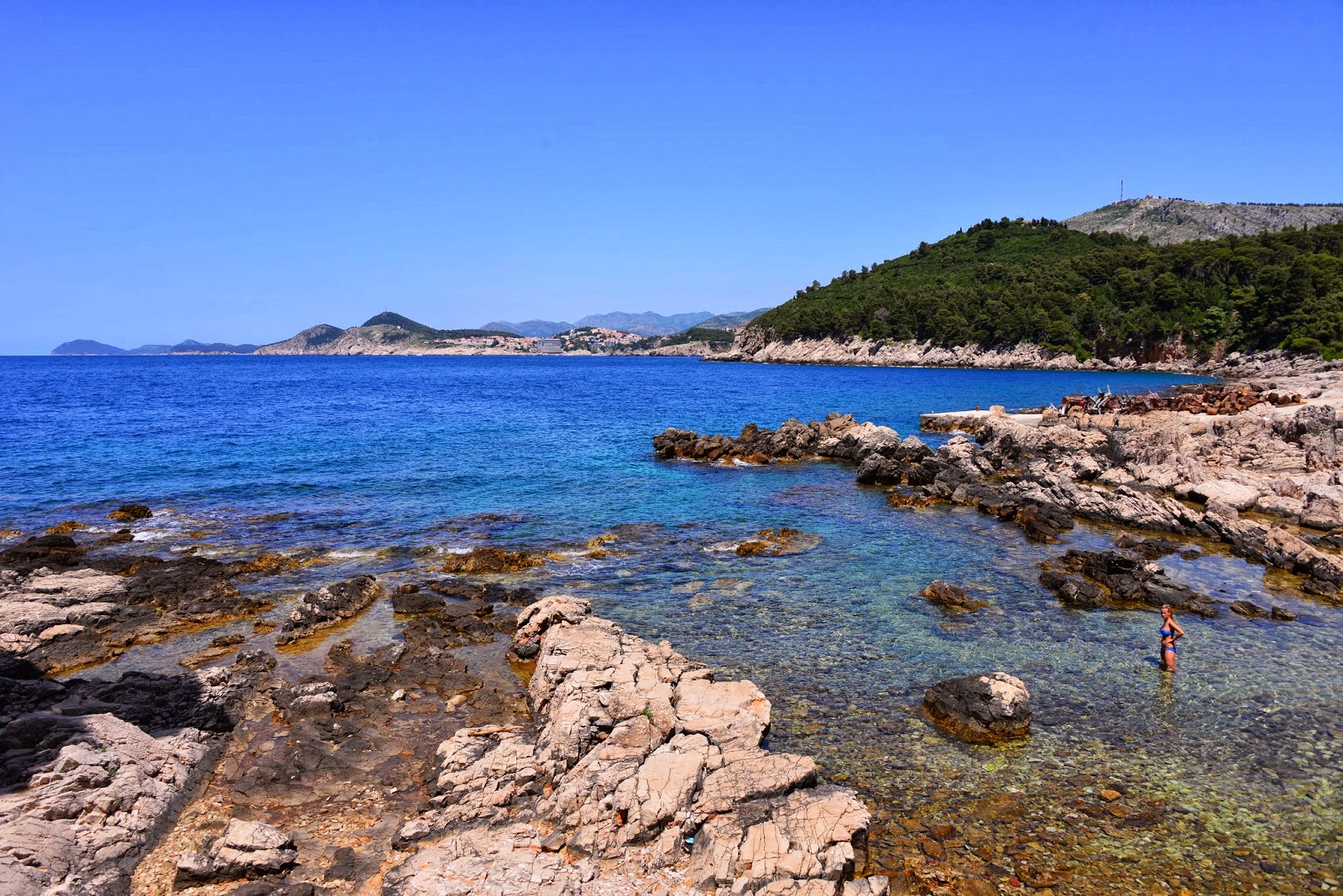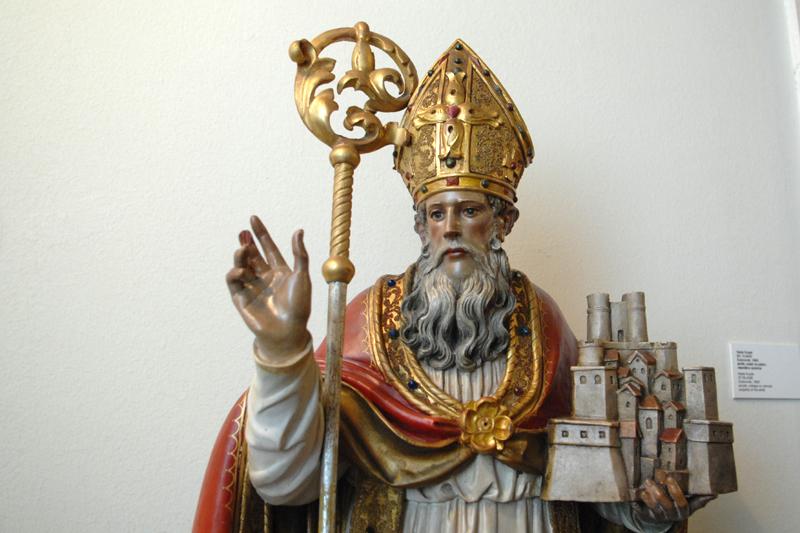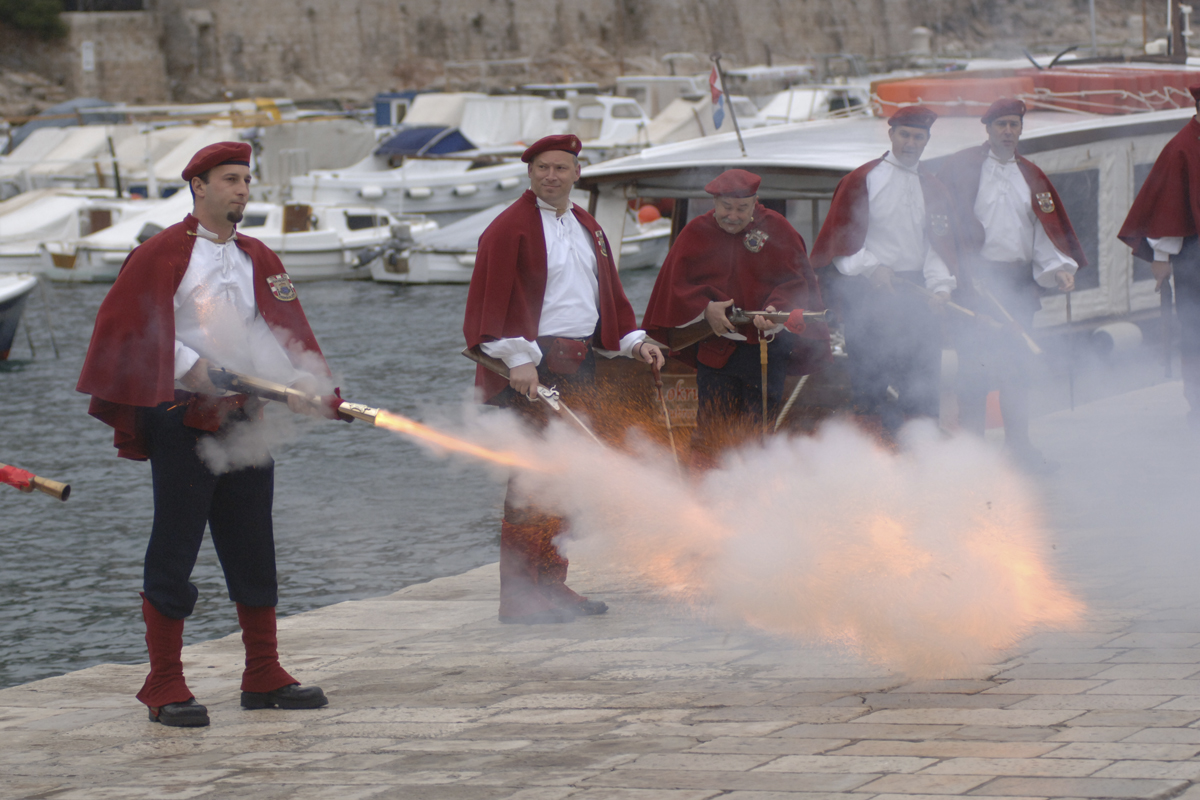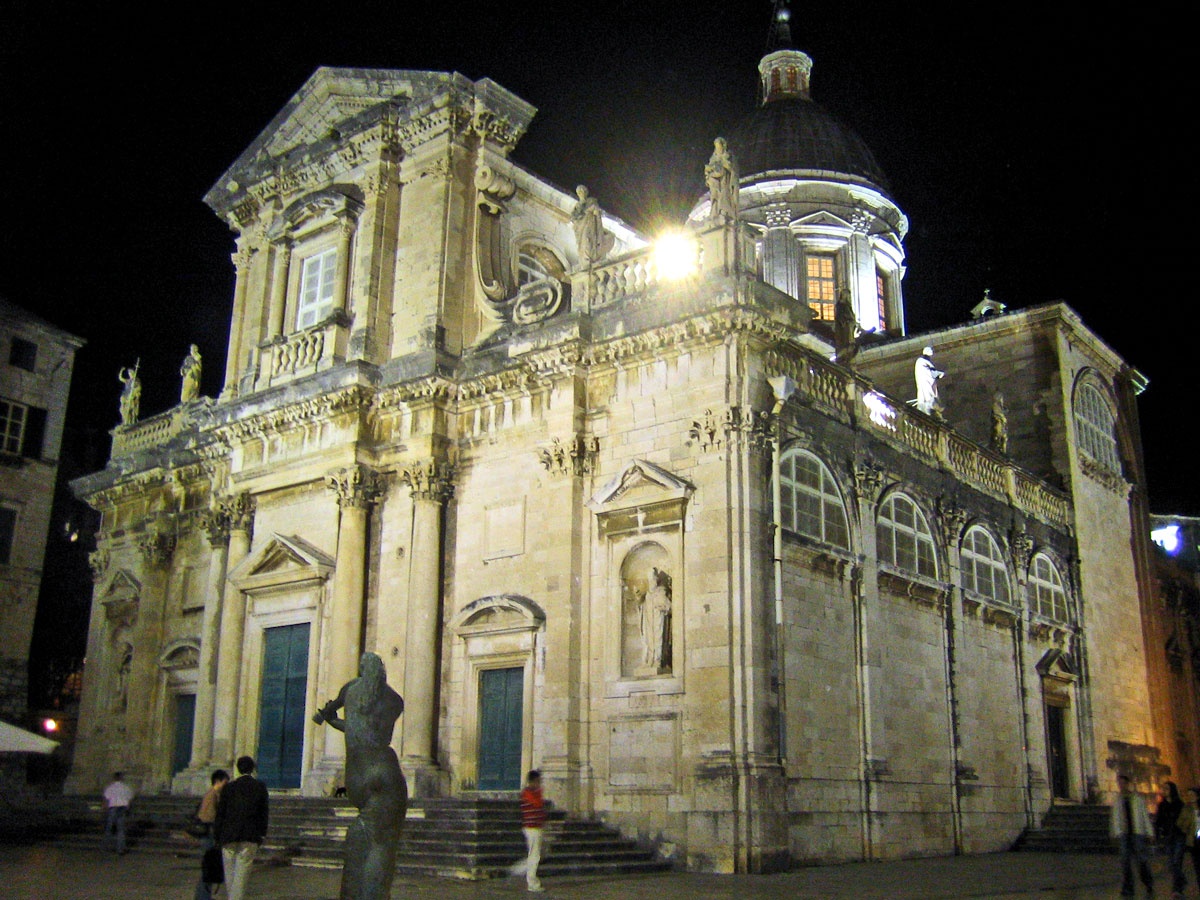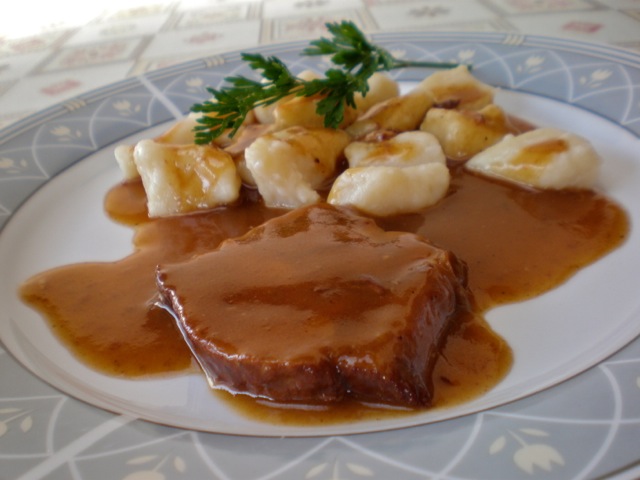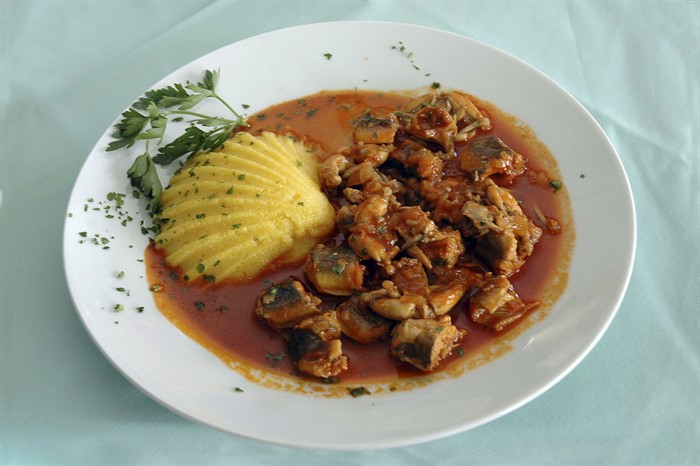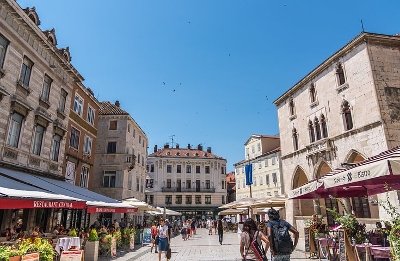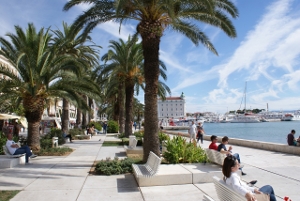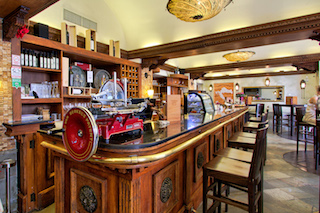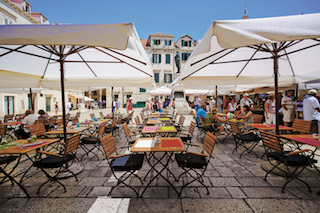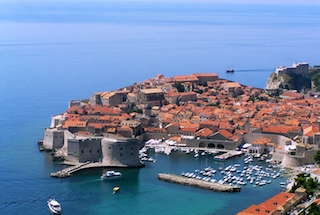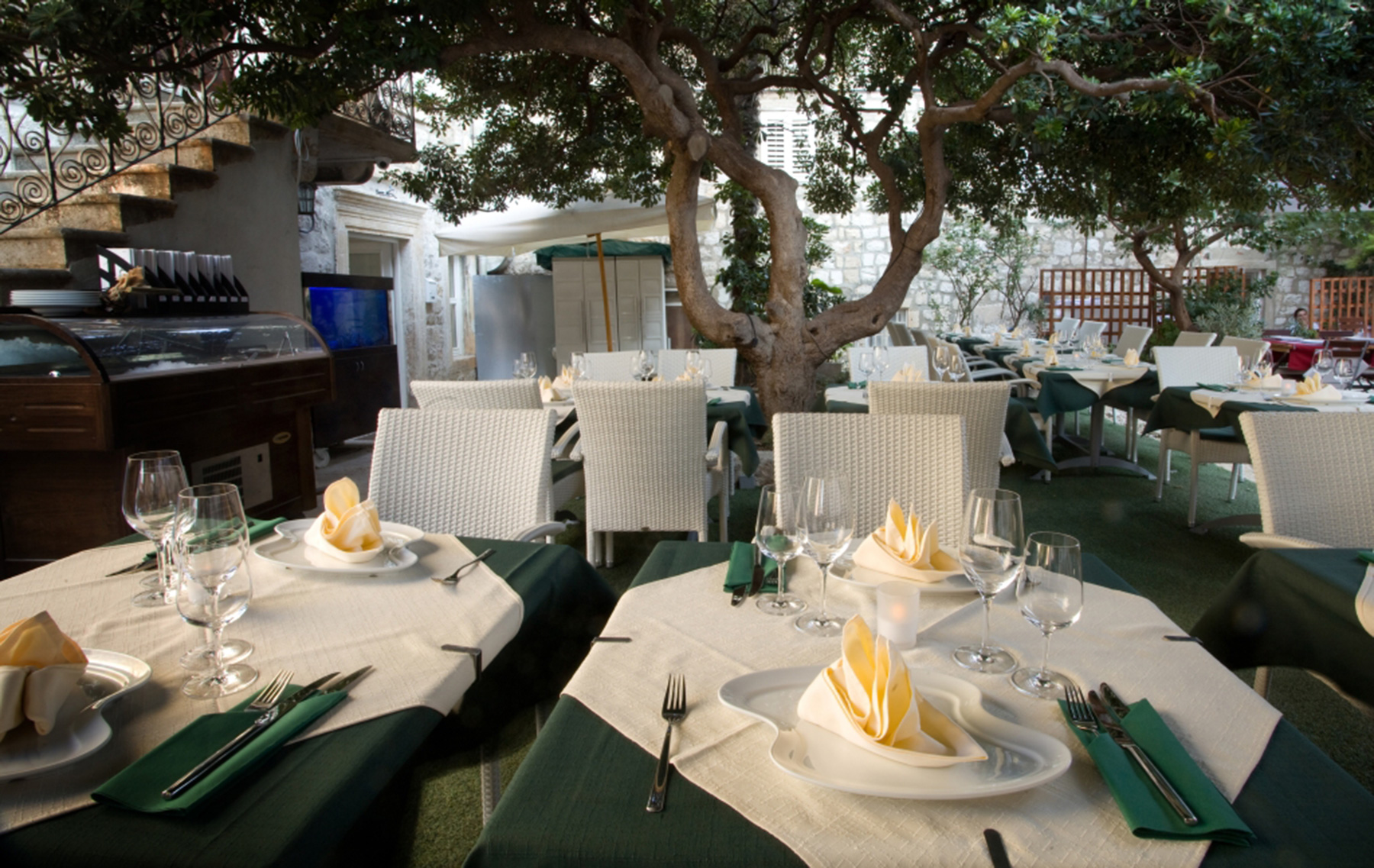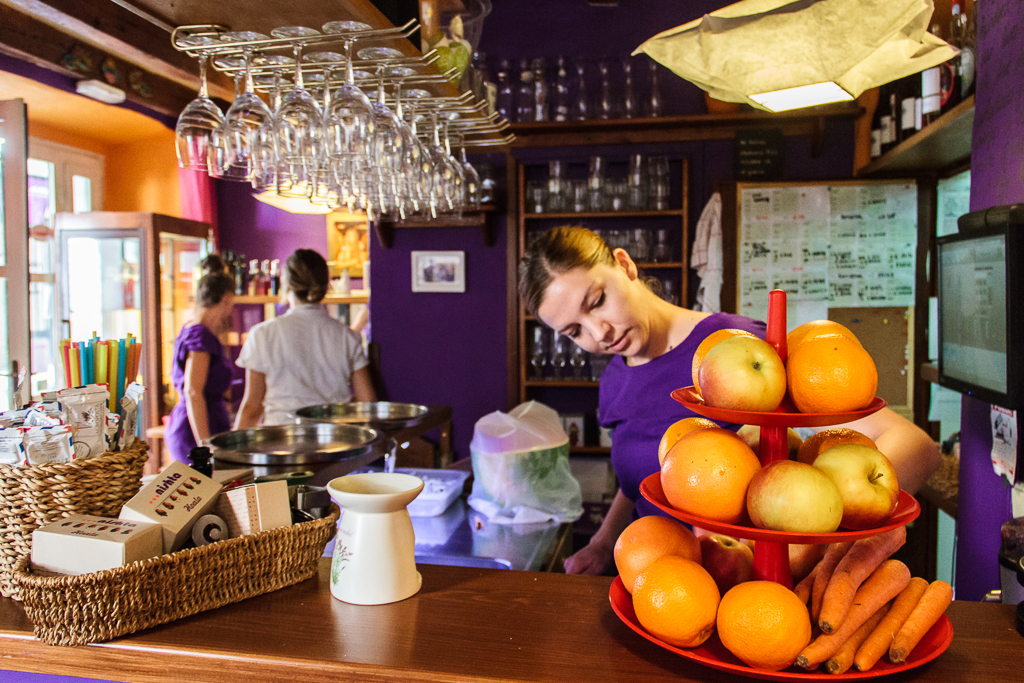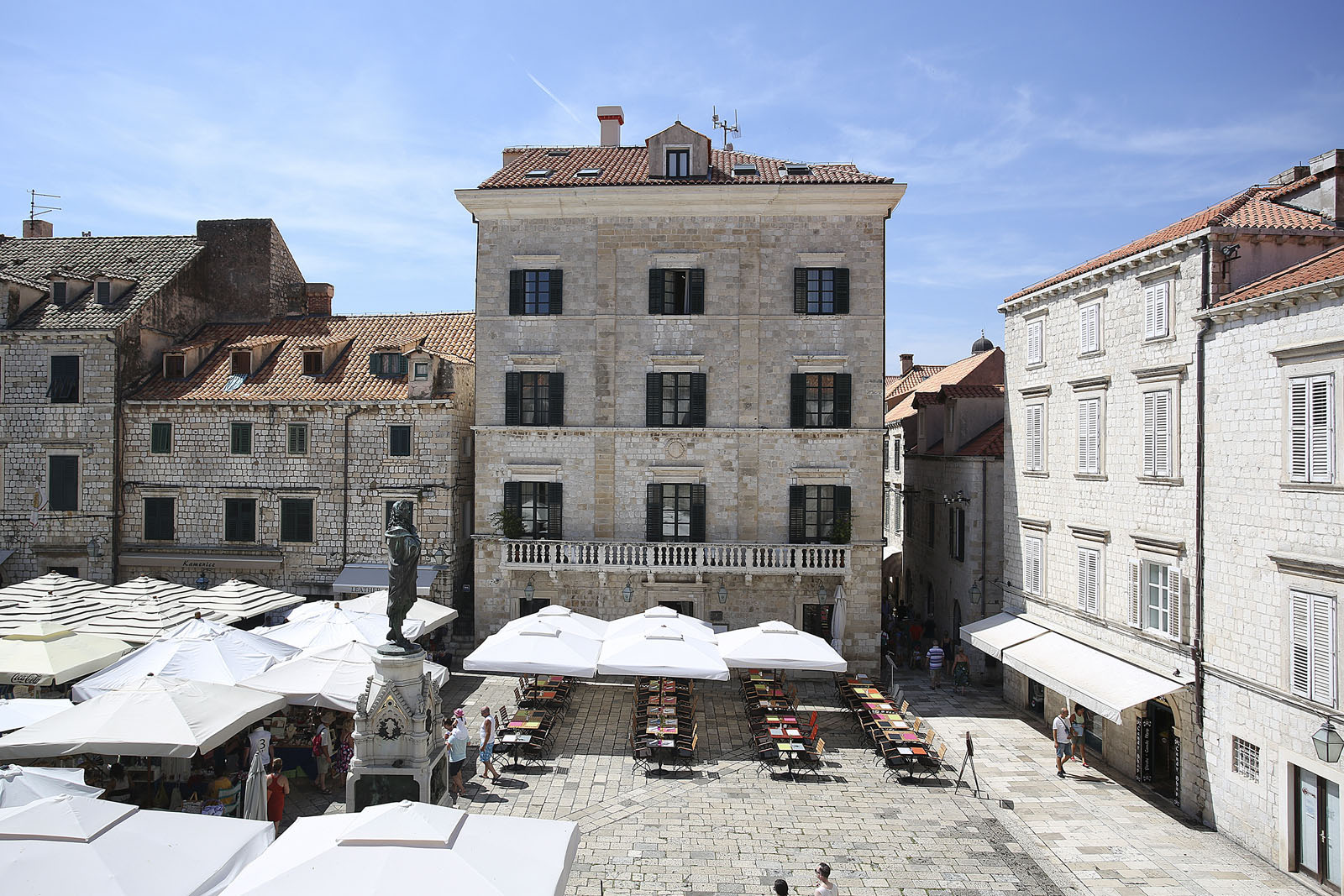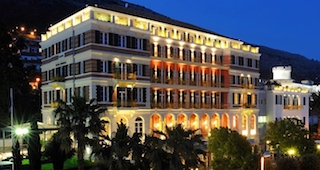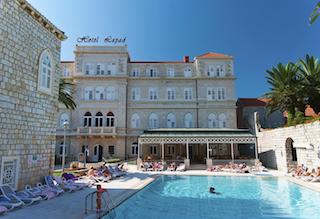Islands we visit
One of the unique features of our Croatia bike and sail trip is the fact that we stay on a luxurious 102 feet gulet for the duration. This allows us the opportunity to travel between some outstanding and interesting islands which we visit by day for point-to-point rides through some glorious scenery. Here we describe some of the islands we visit in some detail; however because of nautical challenges this list is neither set in stone nor exhaustive - we can't guarantee we will visit each of these islands on every tour.
Hvar
Hvar is without a doubt, one of the most beautiful islands in the Adriatic. It extends out in an east-west direction and on its southern-south-western coast there are a number of small islets and islands. Along its northern side there are only two islands, Zecevo and Duga.
Amongst these islands, the most numerous are the Pakleni islands which are in the immediate vicinity of Hvar city. Due to its distinctive vegetation, these island landscapes are protected.
The Pakleni islands (Fiery Islands) got their interesting name from a little known fact...tar and resin used for coating the bottoms of boats used to be cooked there. The western side of Hvar is the widest and mostly contains fields and small towns. Hvar city bestows its beauty upon wide-eyed travellers with medieval fortresses Spanjol (from 1551) and Napoleon (built by the french in 1810) and their hilltop fortressed walls, located high above, atop St Nicolas, offering a splendid view of below. The Benedictine monastery in Hvar is well known for it's craftmanship of unique lace made from agave fibres. The scent within Hvar is difficult to miss with fields of lavender, heather and sage which offer a stunning visual and fragrant experience. The mountainous areas from Brusje to Hvar presents an exceptional view of the largest plantations of lavender on the island. Stari Grad (former greek colony of Pharos) is positioned on a route which passes alongside the island and today's ferry port. Jelsa is a town on the northern side of Hvar where the first hotel was built in 1911 bounded by the two highest points of the island; on the west St Nicholas and on the east, Hum. Only 7 km east of Jelsa, you'll find the abandoned village of Humac. The houses were built of polecat fur and stone and they're completely unique in their entirety of rural architecture. Below Humac is the Grapceva Cave, the most vital prehistoric findings from the Neolithic era, 5000-4000 B.C Close by Jelsa is Vrboska, which is hidden in the depth of the bay that contains a small islet in the centre. They call Vrboska "little Venice" due to it's small bridges with which it is connected. On the northern part of the island and near the city of Hvar is Lozna Beach, then Basina beach not far from Vrboska, and the beaches of Pokrivenik, Zaraca and Virak beside Gdinja. To head to the southern side of the island you must pass through a natural tunnel (hollowed out of the rock) beside a place called Pitve on the southern side up to Ivan Dolac. You'll come across a gorgeous view of the islands Scedro, Korcula and the Peljesac peninsula before exiting the tunnel. When you pass the tunnel you'll get to the southern side of the island which is beautiful and on which vineyards grow abundant with the Plavac Mali (small blue) grape, located in Sveta Nedalja, Zavala. On this southern side of the island you can bathe on the Jagodna and Bojanic beaches which are situated between Sveta Nedelja and Ivan Dolac, so too are the Jedra, Srhov Dolac, Skozanje and Vela Lucica beaches. On the island's eastern side lies the small port of Sucuraj which is also the starting point of the mainland ferry service (Sucuraj-Drvenik line). Hvar and the island of Vis are the hubs of winemaking in these areas, the history of which stretches back far into the past. Hvar possesses a number of local grape varieties Bogdanusa and Drenkusa which cannot be found anywhere else. The southern side of the island is ideal for the cultivation of Plavac Mali due to its sunny hillsides which give the wine a high quality. Renowned wine estates include Plenkovic, whose cellars provide the high quality wine Zlatan Plavac (Grown Cru, 2003), the Tomic wine estate where you can find Hektorovic prosek (sherry - Plavac Mali Barrique 2003), the Dubokovic estate, the Caric estate (Plavac Ploski Barrique 2005), the Plancic, Vujnovic and P.Z Svirce estates.
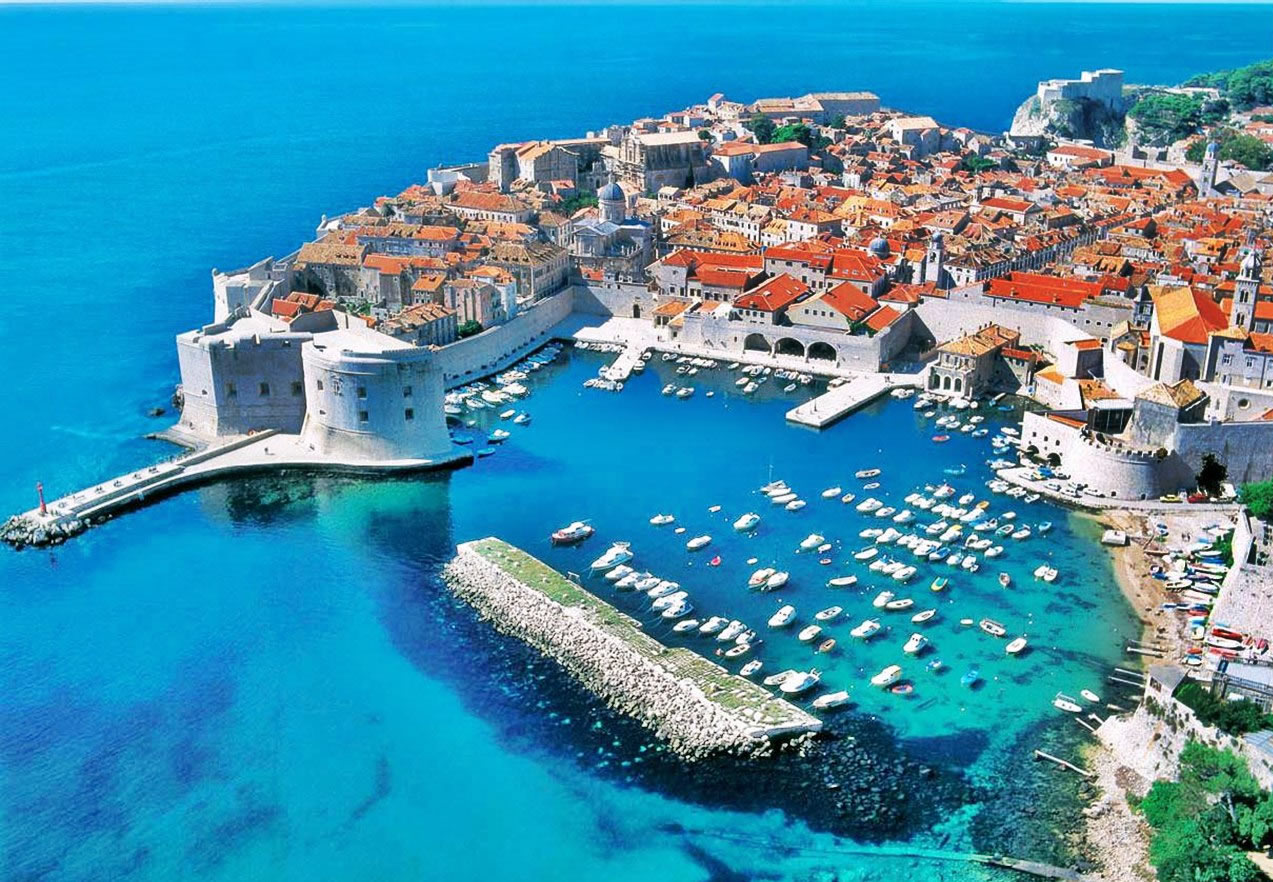
Vis
The island of Vis is one of the most interesting marine areas in the Adriatic. Due to its many years as a forbidden zone for foreigners in Communist Yugoslavia, the island has largely remained untouched and unmarred, surrounded by seas of indescribable beauty. The most attractive is the archipelago around the southeast coast of Vis, then around the western coast, the islets of Bisevo, Brusnik and Sveti Andrija (St Andrew), and in the east, Susac. Vis is one of the most valuable Hellenistic sites in Croatia. One of the most important Dalmatian cities of the Greek colony of Issa was located here in the 4th century BC. The ruins of the ancient city of Issa can still be seen in parts of the port, the Roman baths, the necropolis and theatre and you can also view artifacts from Issa at the Archaeological Museum of Vis which is located in the Austrian fortress Gospina Bataija (Our Lady's Battery) also known for its large collection of amphorae and more notably for its bronze head of the Greek goddess Artemis. The island Vis has a rich sacral heritage as seen in the churches of St Cyprian (Sv. Criprijana) and the Holy Spirit, the Franciscan manostery on the Prirovo peninsula and the sanctuary of Our Lady (Vele Gospe) in Podselja. Komiza is a fishing village located at the southern end of the islands which is dominated by the Grimaldi fortress, which also houses the Fishing museum. The main church in Komiza, the church of St. Mikule is positioned above the village offering a spectacular view of the below.
Solta
Small enough to be quaint and cozy but large enough to have extras like a disco or two, swimming pools and tennis courts, Solta is located about nineteen nautical miles from Split, just west of Brac. The island is another of those special places in Dalmatia where the traditional Croatian way of life has been largely maintained to the present day. This means that the principal industry on the island is fishing, donkeys are still a viable form of transportation and the locals in the eight villages on Solta might strike visitors as unusually kind, inviting and warm. It also means that the pace of life is markedly slower than in other places in Dalmatia, which is quite a feat in itself. This slow pace of life is an ideal environment in which to enjoy the benefits of the island, not the least of which is the main product of the island, fish. The island's fisherman can be seen leaving in the morning and returning with the day's catch, which is then prepared for the evening's meal and accompanied by some excellent homemade wine, both of which will be on hand for you to sample in abundance. As we know, however, man does not survive on bread (or fish) alone. We also need a little adventure from time to time and Solta has that to offer, as well. The tranquil coves and beaches around the island pay perfect host to swimming, sunbathing and even windsurfing, and the island itself is perfect for hiking through the olive groves and vineyards that supply the island's other principal products. In short, Solta is a nice mix of atmosphere, nature and local culture.
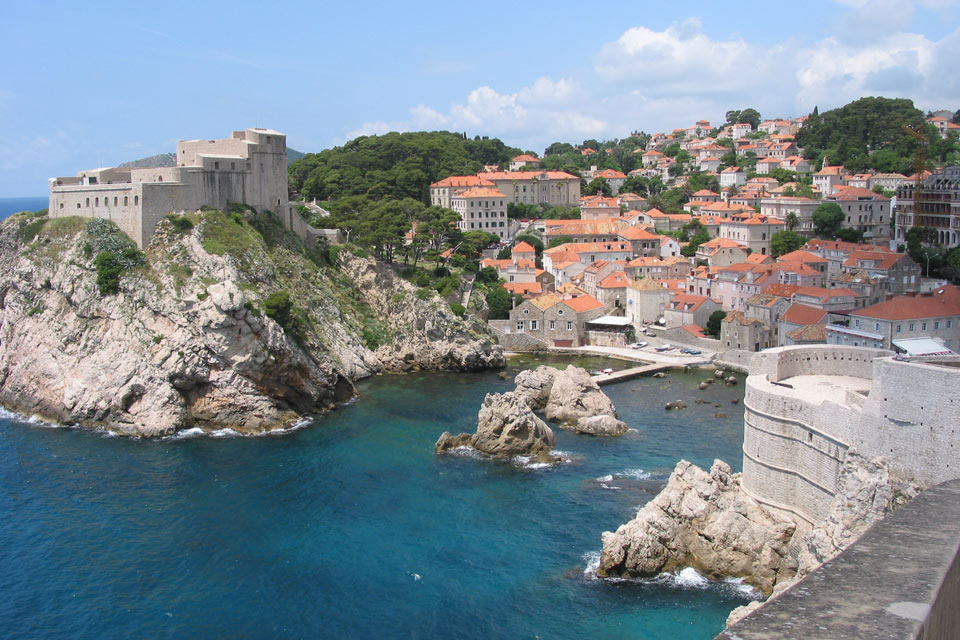
Brac
Brac, the Croatian Adriatic's third largest island, offers spectacular beautiful scenery. It has the highest mountain of any Croatian island and despite its proximity to Split, retains a rustic, rural atmosphere. Even the largest town, Supetar, is not very big. If you like to sunbathe or swim, check out Croatia's most famous beach, Zlatni Rat (Golden Cape). Its a point jutting out into the sea near to the town of Bol, on the south side of the Brac. However, this beach is liable to be crowded during the summer, especially by younger people. It's also a popular spot for windsurfing. If you'd prefer a less frenetic bathing experience you can go to the beach at Lovrencina Bay, which is 4 km east of Postira, in the middle of Brac's north side. There are great views of the mainland mountains from there as well as the ruins of a medieval basilica just above the beach. Skrip is unique in that structures spanning two millenia are located here. There are a Roman cistern, sculpture and mausoleum; medieval castles; and churches from the Middle Ages. Skrip's Museum of Brac contains many ancient artifacts recovered from archeological digs, including a relief of Hercules. There is a beautiful late 15th century Dominican Monastery (Dominikanski Samostan) in Bol. Its museum has a collection of ancient Greek and Cretan artifacts as well as a Tintoretto painting of the Madonna and Child dating from 1563. An even more interesting monastery to visit, especially if you like to hike, is the Hermitage of Blaca, founded in 1588 by monks fleeing the Turks. Perched on the side of a steep sided canyon about half way between the sea and the summit of Brac's highest peak, Vidova Gora, Blaca indeed is a perfect place to hike. You can hike to the monastery either up a trail that begins near the coastal village of Murvica, or down from another trail that starts from a dirt track on the flank of Vidova Gora. Allow several hours for the round trip hike and bring plenty of water. You will be rewarded with great views plus Blacas's ascetic architecture and splendid isolation.
Hikers also might want to climb to the 780 meter summit of Vidova Gora, the highest mountain of any Adriatic island, 2 hours on a well marked trail from Boll. Olive tree orchards and wild olive trees cover a significant portion of Brac, and there are many small-scale olive oil producers. Brac white marble has been exported all over the world. It's claimed that Brac marble is used in the construction of the American White House. And of course, it was used in the building of many local houses. There are two caves worth exploring on Brac: Zmajeva (dragon) and Kopacina. They're located between Supetar and Donji Humac
Mljet
Mljet gets a growing share of tourists, but as one of the more remote and less developed Islands, with (thankfully!) a limited ferry service, it lacks the kind of mass tourism of much of the Dalmatian coast and some other more accessible islands. This isn't the place to come for late night bars, concerts or discos. One might hope it never will be. Be prepared to fall in love with nature all over again, for this island has a stunning quality waiting for you to discover. Croatia's 8th largest island is approximately 3km wide and 37km long making it attractive to explore. It has an area of roughly 100 square km with 131 km of coastline and many little niches and coves to discover, so you'd be forgiven for wanting to stay. With five distinct forest tree varieties, abundant fauna and lush vegetation, it's easy to see why Mljet is called The Green Island. Miljet offers a panorama of coastline, cliffs, reefs and numerous islets as well as the rich topography of the hills that rise steeply above the sea and plummet back into deep valleys sheltering ancient stone villages. The submarine world includes quite an array of fish and several types of corals. With fantastic weather, sailing, recreational sports, swimming, scuba diving, hiking and bicycle paths are only a fraction of the pleasures that you can enjoy here. The western end of Mljet has been protected as a National Park since 1960.
Mljet National Park is Mljet's top attraction. The park, encompasses 54 square kilometres at the western end of the island, with an astonishing interior and coastline beauty. Veliko Jezero and Malo Jezero (Big Lake and Small Lake), and the villages of Soline, Babine Kuce, Pomena, Polace and Govedari all lie within the park boundaries. Of interest, this park represents the first institutionalised attempt to protect the native eco-system in the Adriatic. The Benedictine Monastery on the islet of St Mary (Samostan Sv Marija) stands on a tiny island, in a lake on the island of Mljet and is the island's cultural and spiritual heart.
Polace is a village named after the ruin of a significant Roman palace and fortifications - one tower is 20m high - built between the 2nd century and the 5th century. Second in size to the palace of Diocletian in Split, you can't miss it: the road to Pomena slips right between its high walls.
Pomena is located on the western coast of Mljet in the National Park, about 200m from Malo Jezero. This village, built after World War II, has only about 50 inhabitants living among the charming thick forests and working in agriculture, fishing and tourism. The bay of Pomena is perfect for small yachts, which can pull up to the pier.
The Govedari settlement began here in the late 18th century when two families of land workers and fishermen from Babino Polje were given permission to settle by the Benedictines to work as cattle-breeders (goveda means cattle in Croatian). Located in the national park, 5km inland, this ethnologically interesting site is a great place to be surrounded by peace, serenity and lush vegetation. Babine Kuce is a picturesque little fishing village located on the shores of the Veliko jezero just beneath Govedari. It offers a splendid view of the islet of St Mary.
Babino Polje is the central and largest inhabited area with around 350 people. Babino Polje is the administrative centre of the island. Stretched along a ridge above the bypass road and a field (the name means Grandma's Fields), Babino Polje is surrounded with pine woods, groves of old, twisted olive trees and vineyards, and at 514m, Veliki Grad is the hightest hill on the island. Odysseus's Cave (Odisejeva Spilja), that technically would be Calypso’s cave, is a place where supposedly Odysseus was on his travels; Odysseus, shipwrecked on his home from the Trojan War, only stayed with the nymph for seven years, and most of the time he was pining for his wife and his home. After walking along a path lined with rock walls and wildflowers, which takes you out above a deep grotto and the crashing waves, you may wonder why he was in such a hurry to leave. Local fishermen now use the grotto as a harbour.
Prozura is a medieval village used by Ragusan nobles who were looking for a relaxing getaway. Perched on a hill over a Blato (an intermittent lake) and the sea, Prozura has a 17th century watch tower and three beautiful chruches; the church of the Holy Trinity, the church of St Martin and the church of St. Rocco. Maranovici is an 18th century Baroque house of the Pes family and is located in the middle of the town. The 19th century parish church of St Anton rests on the foundations of an older church and features Gothic architectural elements.
In nearby Korita, the ruined 14th century church of St Mary of the Hill mixes Gothic and Renaissance elements, and demonstrates features typical of the island’s churches. A roughly square plan with a deep porch extending to the front, and a picturesque belfry "na preslicu" (on a distaff, that is, the belfry has a split where the bel hangs, the way a distaff's end is cleft to hold wool). Some of the manor houses have Renaissance-Baroque elements. The town has its own 17th century defence tower with loopholes for firing. Korita is named for the stone troughs, common on the island, that are used to capture rainwater.
Korcula
Korcula, birthplace of the renowned traveller, Marco Polo, is a compact jewel of Venetian architecture surrounded by the clear blue waters of the Peljesac channel and its terracotta rooftops at sunset are a sight to behold.
Korcula town, alongside Dubrovnik, is one of the Adriatic towns which hits the news from time to time with reports of rich, famous and notable types who buy up old town properties for heart-stopping sums. There is good reason for this - the tiny, almost circular old town occupying a rocky promontory is one of the most perfectly preserved and most romantic and historic towns you'll ever see with many opportunities for shutterbugs. It doesn't take long to wander through the atmospheric streets, where you'll come across Gothic details and balconies that make you feel like you've entered a Slavic version of Romeo and Juliet. Pay attention to the hidden architectural delights, such as relief figures on the cathedral of St. Mark and, as rumor has it, the interestingly sculpted menu of an old brothel near the main entrance or visit the town museum and the local galleries.
Many of the historical sights and landmarks are just a stone’s throw from the main square and you'll be bedazzled by the amount of history and culture that surrounds you. Take for instance the Tower of Marco Polo, believed to be the house in which the great world traveller and writer was born, whilst there head up to the tower for some breathtaking panoramic views of the islands. There is also a Marco Polo Museum which reflects on his life through seven vast and deep scenes which bring to life his amazing adventures. The Abbey Treasury of St. Mark is in the heart of the main square and features reliquaries, artworks, liturgical vestments and manuscripts with some dating as far back as the 12th century. The Icon Gallery features artworks of Byzantine paintings on wood and most of which were brought across by island sailors from the 13th to 17th century. The Revelin Tower with its descending steps is a majestic site in itself whilst the Maximilian Vanka Gallery hosts his astute paintings and portraits for which he is most known. All in all, it is a perfect place to recharge your batteries.
One of the other most prominent features of the island is its folk tradition which includes the Moreska, a dance with swords, which you can witness during the summer months, heralded by drumbeats as a parade of citizens in historical costume passes through prior to the performance.
With such material, Korcula has a long tradition of tourism and is one of the more commercialised of Croatia's Adriatic towns, so the town itself gets pretty busy during high season. But this is a relatively large island, there are plenty of other places to explore and get away from it all. Head towards the village of Lumbarda where you'll find picturesque vineyards. You must try the Grk wine, only produced in the surrounding area, and said to have been brought from ancient Greece after the fall of Troy. Wander the stone streets of the old village and feel miles and centuries away from everything else. Other destinations for wine connoisseurs are the villages of Cara and Smokvica, these two island gems also add to the Agricultural palate as they are known for the top quality white wine known as Posip, considered to be one of the most prestigious wines of the Croatian South.

Lastovo
Lastovo is not furthest away from coast, that honour goes to Vis. Maybe that's why the island culture is so different and well preserved. Like Vis, Lastovo was a military base until 1989, so access to the island was restricted. With not a great deal to do, the island became depopulated. But nature has been left pretty much undisturbed, so you could say it's an untouched ecological paradise.
Many people sense in Lastovo a spirit unlike anything else, a sense of breath of ages. Lastovo town sits uphill in a basin facing away from the sea to escape the attention of pirates. The mellow stone of the houses basking in the warm sunlight is captivating. Walking in the town's streets, those with a sense for the antique and the eccentric will wonder at a culture so very detached from modern urban life.
Lastovo is a town of chimneys. In times past, a sign of the wealth of a household was the size and ornateness of one's chimney, and many unusual examples still stand. Another vital aspect of Lastovo's heritage is the Poklad - the traditional pre-Lent carnival celebrating the island's deliverance from Catalan pirates. An effigy of the Catalan messenger takes centre stage, spectacularly released from a hilltop to slide on a rope to the town centre with firecrackers exploding at its feet. Humiliating indeed. At this time, as well as during summertime festivals, you can see the island's folk costume, where the men wear scarlet and black with embroidered braces and hats bedecked with colourful flowers.
With so little (except carnivals) to disturb them, fish adore Lastovo, and you can be sure of an excellent meal here.

